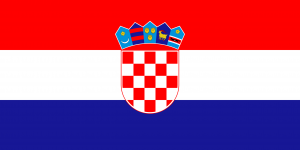Language/Croatian/Grammar/How-to-Use-Have
Hi Croatian learners! 😊
In this lesson, we will learn how to use "have" in Croatian sentences. Using "have" properly can make your sentences more accurate and help you to express yourself better in daily conversations.
Don't hesitate to look into these other pages after completing this lesson: Questions & Nouns and Cases.
What is "have" in Croatian?[edit | edit source]
"Havati" is the Croatian verb for "to have". You can use it to express possession, experiences, or relationships. It is a transitive verb and requires an object.
Here are some examples:
| Croatian | Pronunciation | English |
|---|---|---|
| Ja imam auto. | Ja e-mam au-to. | I have a car. |
| On/ona/ono ima iskustvo. | On/ona/ono eema iskustvo | He/she/it has experience. |
| Mi imamo dobar odnos. | Mi ee-ma-mo do-bar od-nos. | We have a good relationship. |
How to Use "Have" in Past Tense[edit | edit source]
To express that you had something in the past, "have" is conjugated into the past tense. To do this, add -ao/-la/-lo to the stem form of the verb. The conjugation varies based on the gender and number of the subject of the sentence.
Here are some examples:
| Croatian | Pronunciation | English |
|---|---|---|
| Ja sam imao auto. | Ja sam e-mao au-to. | I had a car. |
| Ona je imala iskustvo. | Ona ye ee-ma-la iskus-tvo | She had experience. |
| Mi smo imali dobar odnos. | Mi smo e-ma-li do-bar od-nos. | We had a good relationship. |
Notice that in the past tense, "have" is also used to create the verb "to be". In Croatian, we don't have a separate verb for "to be" like in English. Instead, we say "ja sam" (I am) instead of "imam" (I have). It's essential to learn this in order to understand basic Croatian sentences.
Here's a dialogue to illustrate this:
- Person 1: Živio sam u Zagrebu nekoliko godina. (I lived in Zagreb for a few years.)
- Person 2: Oh, ja sam Zagrepčanin. (Oh, I am a Zagreb native.)
How to Use "Have" in Future Tense[edit | edit source]
To express that you will have something in the future, use the future tense of the verb. To do this, add -ati/- će/- će to the stem form of the verb. The conjugation also varies based on the gender and number of the subject of the sentence.
Here are some examples:
| Croatian | Pronunciation | English |
|---|---|---|
| Ja ću imati auto. | Ja chu ee-ma-ti au-to. | I will have a car. |
| On/ona/ono će imati iskustvo. | On/ona/ono tchee ee-ma-ti is-kus-tvo | He/she/it will have experience. |
| Mi ćemo imati dobar odnos. | Mi tche-mo ee-ma-ti do-bar od-nos. | We will have a good relationship. |
How to Use "Have" in Present Perfect Tense[edit | edit source]
To express possession or experiences in the present, use the Present Perfect Tense. To do this, use the present tense of the Croatian verb "to be" (biti) in conjunction with the past participle of "to have" (imati). The past participle is the English equivalent of "to have" plus -en/-ena/-eno.
Here are some examples:
| Croatian | Pronunciation | English |
|---|---|---|
| Ja sam imao auto. | Ja sam e-mao au-to. | I have had a car. |
| Ona je imala iskustvo. | Ona ye ee-ma-la iskustvo | She has had experience. |
| Mi smo imali dobar odnos. | Mi smo e-ma-li do-bar od-nos. | We have had a good relationship. |
Practice Exercise[edit | edit source]
Complete the following sentences with the correct Croatian form of "to have":
1. Peter __________ žutu jaknu. (Peter has a yellow jacket) 2. Vi ___________ pivo u hladnjaku? (Do you have beer in the fridge?) 3. Oni ____________ pet pasa u svojoj obitelji. (They have five dogs in their family.)
Answers: 1. ima 2. imate 3. imaju
Conclusion[edit | edit source]
In conclusion, "to have" or "havati" is an essential verb in Croatian. It is used to express possession, experiences, and relationships in different tenses. To improve your Croatian Grammar, you can also use the Polyglot Club website. Find native speakers and ask them any questions!
➡ If you have any questions, please ask them in the comments section below.
➡ Feel free to edit this wiki page if you think it can be improved. 😎
Finished this lesson? Check out these related lessons: 0 to A1 Course & Gender in Croatian.
Other Lessons[edit | edit source]
Sources[edit | edit source]
- Serbo-Croatian grammar - Wikipedia
- The Accusative Case: Croatian Grammar Form In Detail
- Croatian language - Wikipedia

